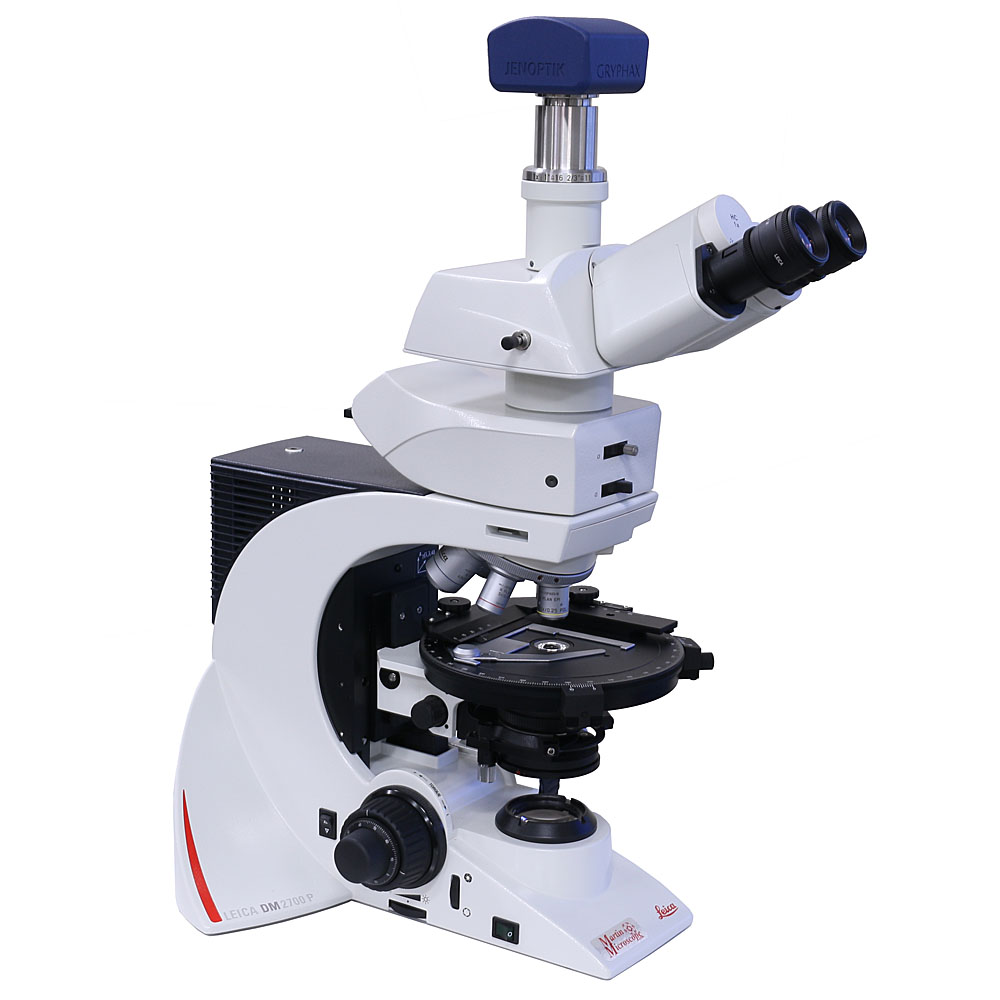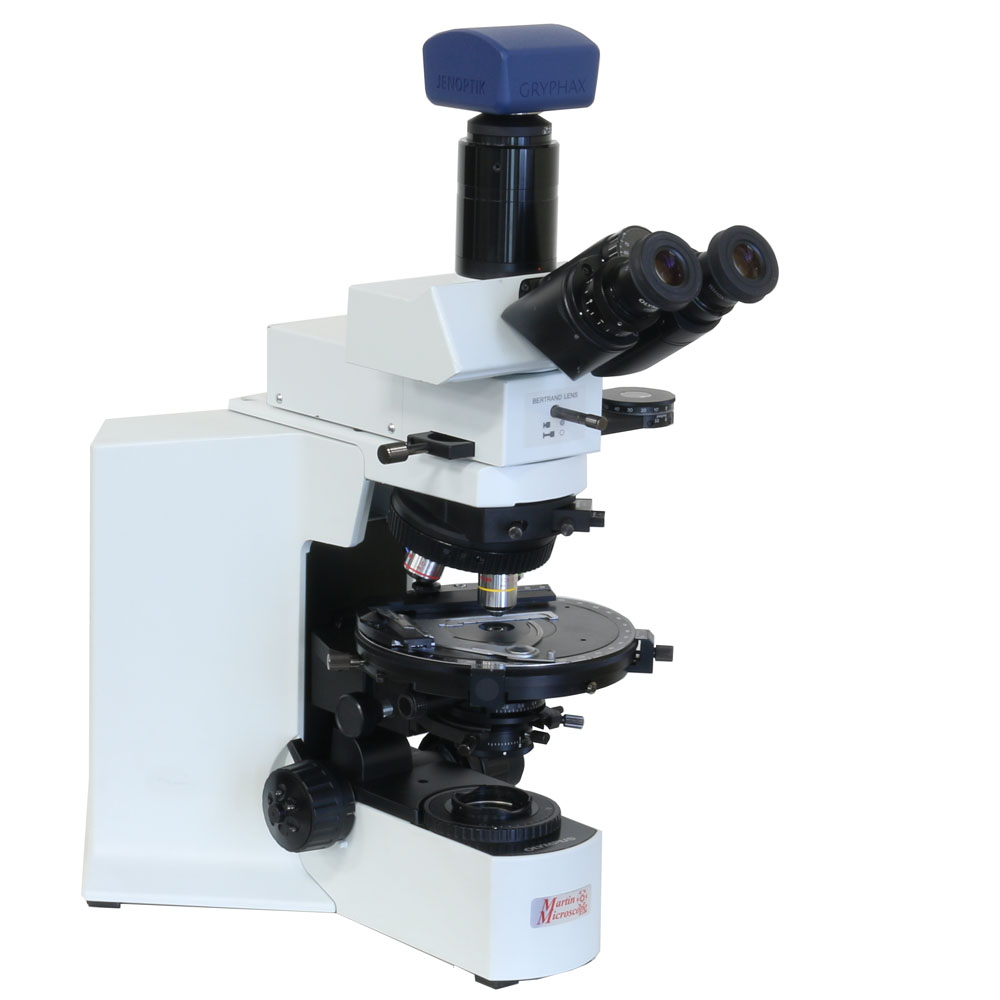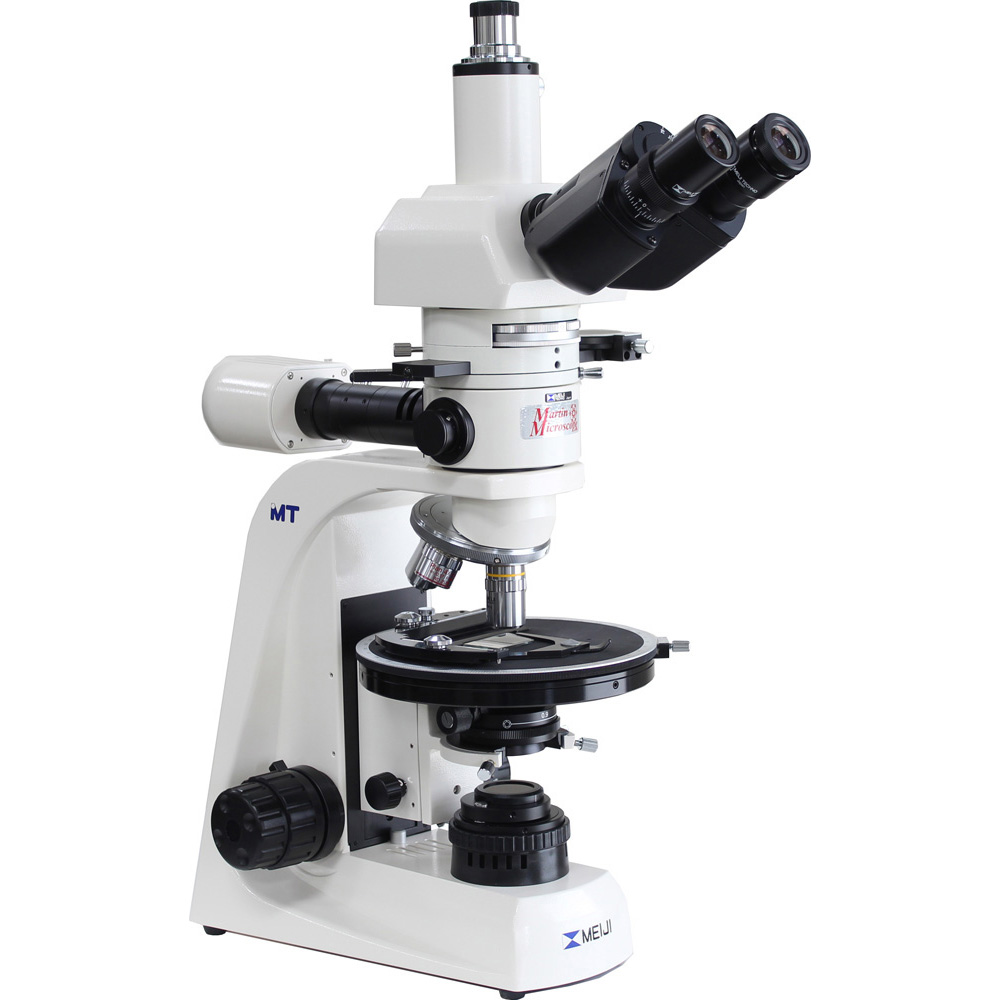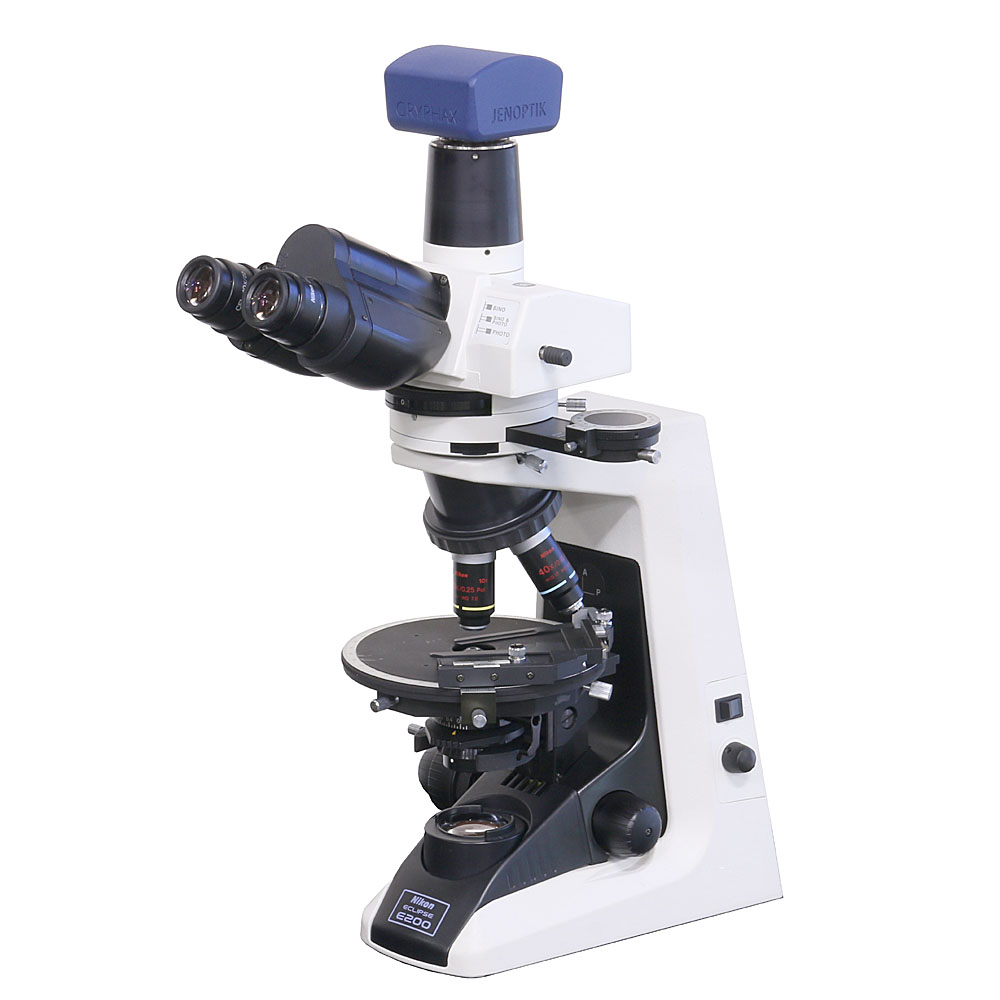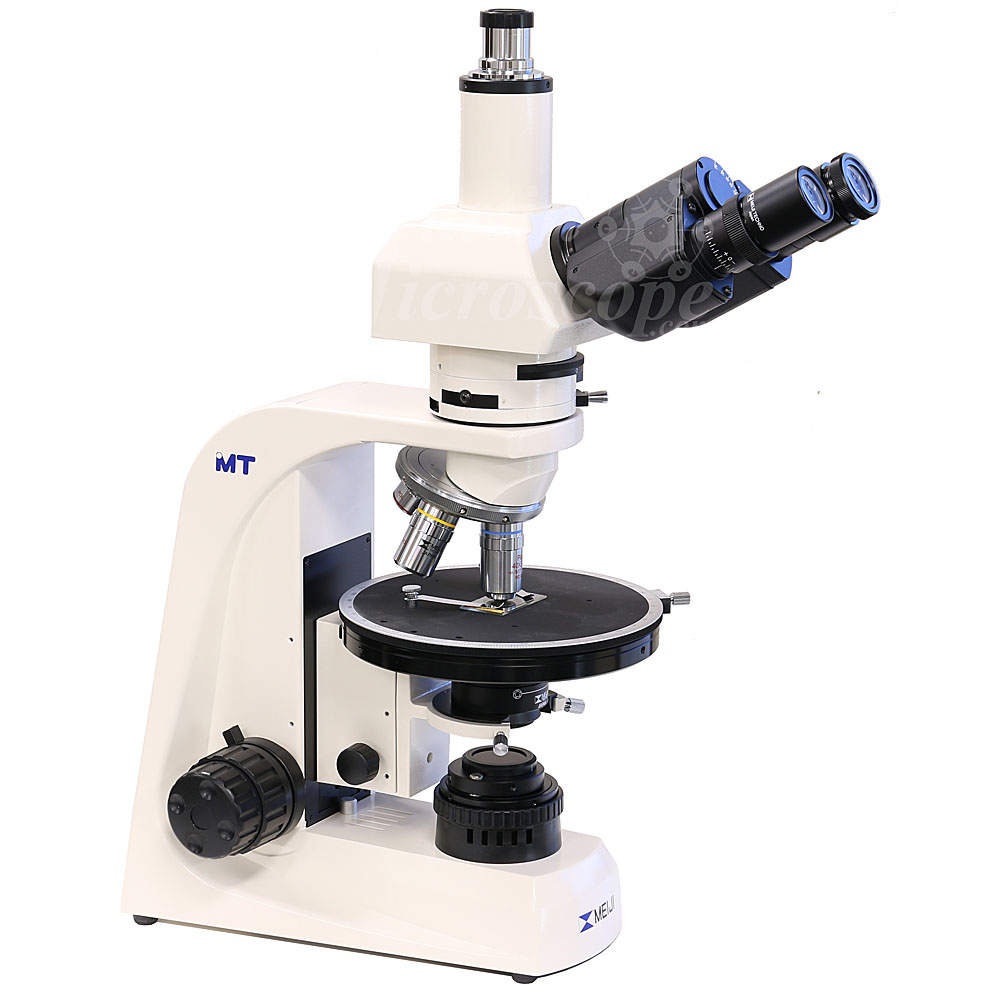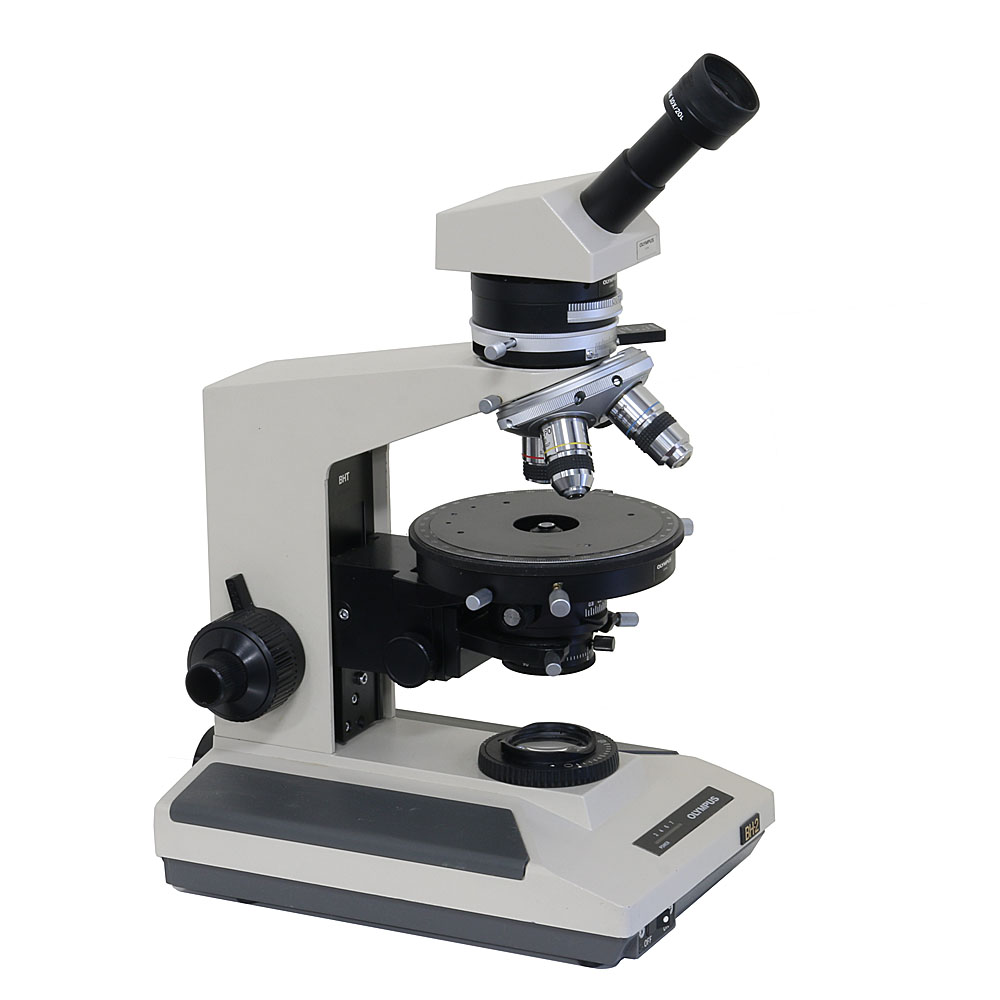Polarized Light Microscopes (PLM)
Polarized Light is an illumination technique in which polarizing filters are placed above (Analyzer) and below (Polarizer) the specimen. When these filters are engaged and crossed a black-out effect occurs called Extinction. Specimens which are birefringent (having more than one index of refraction) will appear bright against the black background. True Polarizing microscopes, often called petrographic microscopes, will have a circular rotating stage, a centerable nosepiece, and a Bertrand lens for observation of conascopic images (interference figures). Polarizing microscopes can provide quantitative information about the specimen. They are used in geology for mineral thin sections, by textile and forensic sciences for fiber analysis, etc. A specialized polarized light technique call Disperserion Staining is used for asbestos identification.
Shop Polarized Light Microscopes (PLM)
Sale
Sale
Sale

